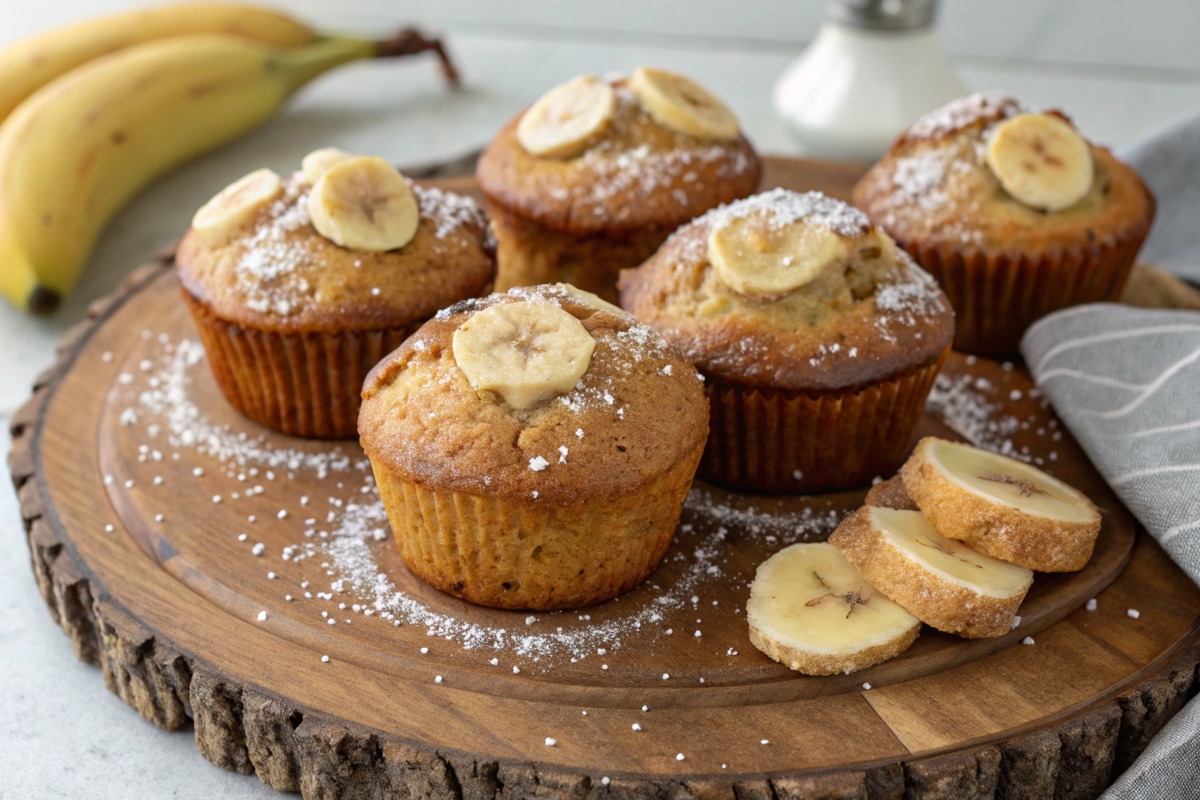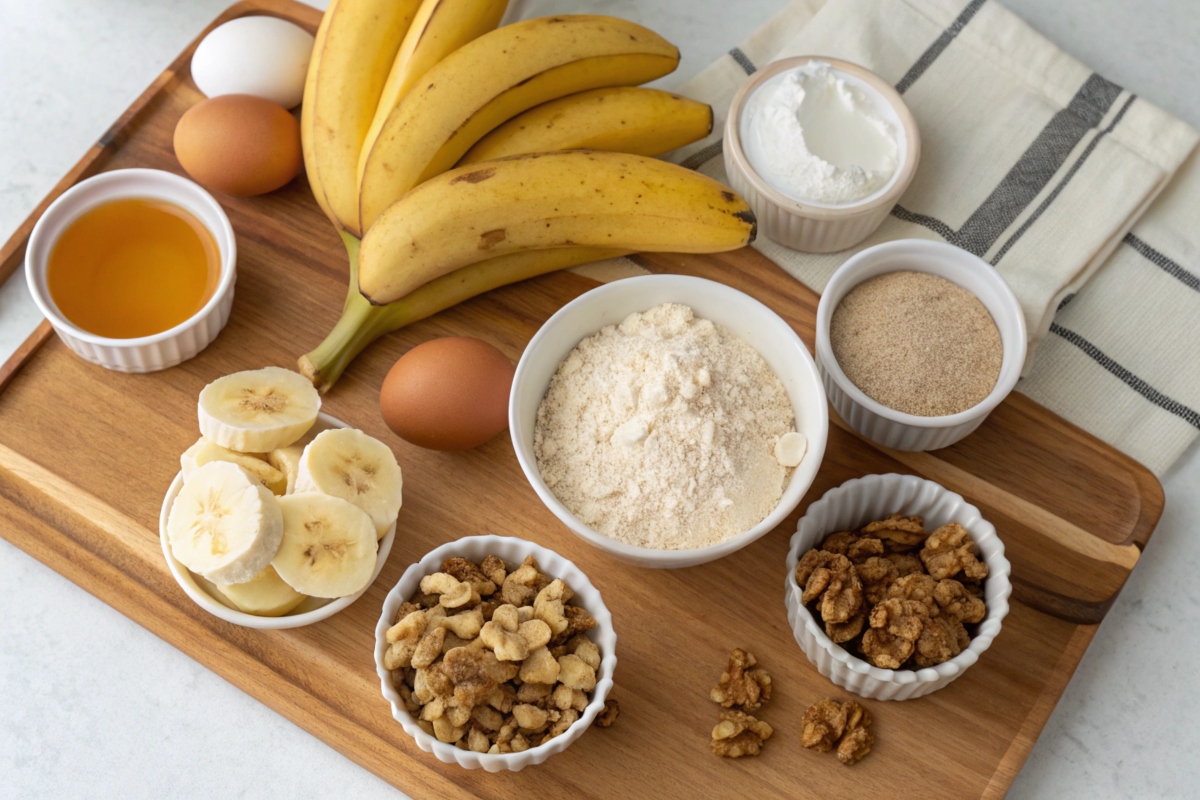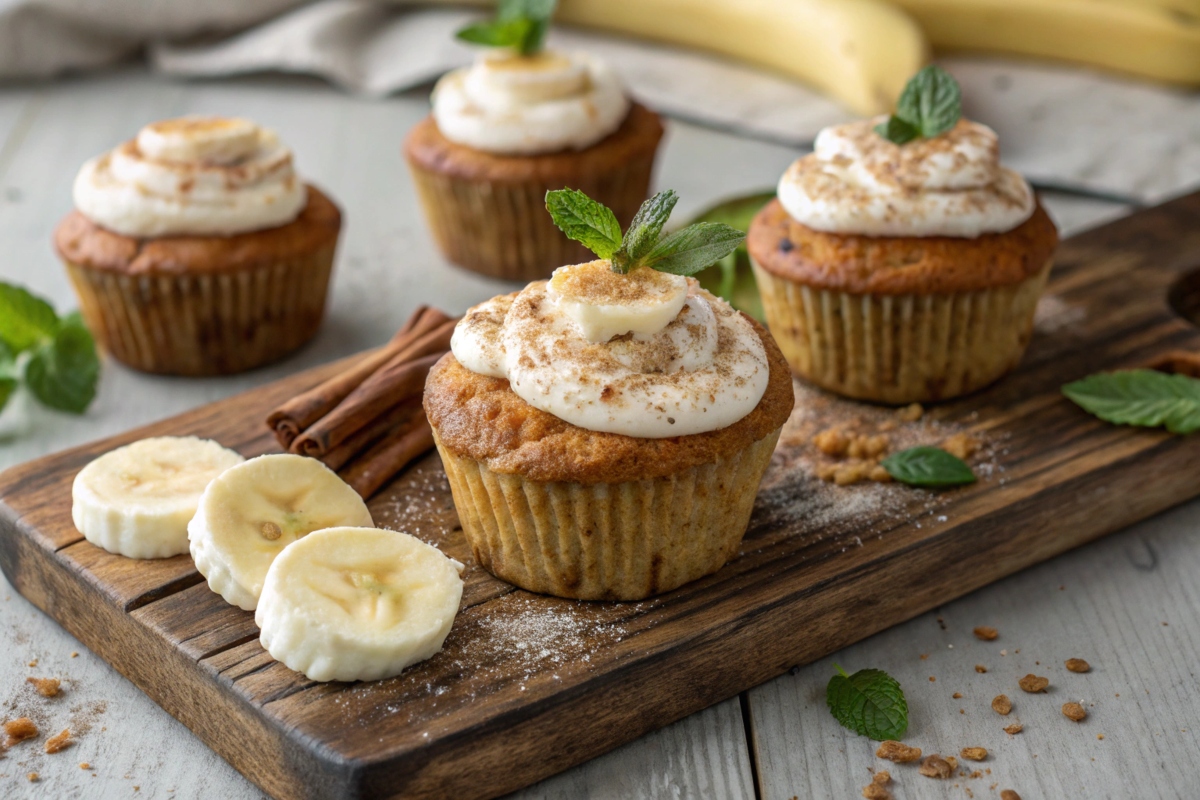Gluten-free baking has become popular among people seeking healthier food options or managing gluten intolerance. In traditional baking, gluten provides elasticity and structure. However, for those with celiac disease or gluten sensitivity, consuming gluten can cause significant discomfort. This has inspired the development of creative gluten-free recipes, such as gluten-free banana bread muffins.
Baking without gluten requires alternative flours like almond, oat, or rice flour, which can replicate some of the qualities of wheat flour. These alternatives allow you to enjoy baked goods without losing texture or taste. Gluten-free banana bread muffins are particularly special because they stay moist, have a naturally sweet flavor, and are easy to make. With the right ingredients and techniques, you can create fluffy, delicious muffins that everyone will love. Plus, gluten-free baking ensures everyone at the table can enjoy the treat together.
Why Choose Gluten Free Banana Bread Muffins?
There are several reasons to consider making gluten free banana bread muffins. Whether you have a gluten sensitivity or simply prefer healthier baking alternatives, this recipe caters to diverse dietary needs. These muffins are versatile, nutritious, and packed with natural flavors that appeal to everyone.
Here are some key reasons why gluten free banana bread muffins are a great choice:
- Suitable for gluten-free diets: They are perfect for those with gluten intolerance, celiac disease, or anyone following a gluten-free lifestyle.
- Naturally sweet: The ripe bananas add natural sweetness, reducing the need for added sugar.
- Easy to digest: Gluten-free recipes are often gentler on the stomach, even for people without known sensitivities.
- Kid-friendly: These muffins make a great snack or breakfast option for children.
Additionally, these muffins are freezer-friendly, making them a convenient choice for busy mornings or meal prepping. With gluten free banana bread muffins, you can enjoy a guilt-free treat that aligns with your dietary goals.
Health Benefits of Gluten-Free Baking
Choosing to bake gluten-free offers many health benefits, not just for those with gluten sensitivities. When you make gluten-free banana bread muffins, you are using wholesome ingredients that support overall well-being.
Gluten-free baking often includes nutrient-rich flours like almond flour or oat flour. These flours are packed with essential vitamins, minerals, and fiber, which can help improve digestion, boost energy levels, and keep you feeling full longer. Additionally, reducing gluten intake can help ease bloating, headaches, and inflammation for people who are sensitive to it.
Here are a few more health benefits of gluten-free baking:
- Promotes gut health: Gluten-free recipes can help maintain a healthy digestive system.
- Reduces inflammation: For sensitive individuals, removing gluten minimizes inflammation and discomfort.
- Supports nutrient intake: Gluten-free flours are often less processed and more nutrient-dense.
By baking gluten free banana bread muffins, you’re not only creating a delicious snack but also prioritizing a healthier way of eating. These muffins are proof that gluten-free baking can be both nutritious and indulgent.
Key Ingredients for Gluten Free Banana Bread Muffins
To make gluten free banana bread muffins, it’s essential to use the right combination of ingredients to ensure the muffins turn out moist, fluffy, and flavorful. Each ingredient plays a crucial role in achieving the perfect texture and taste.
Here are the key ingredients you’ll need:
- Ripe bananas: Bananas add natural sweetness and moisture, making them the star ingredient of these muffins.
- Gluten-free flour blend: A high-quality gluten-free flour mix helps mimic the structure provided by traditional wheat flour.
- Eggs: Eggs bind the ingredients together and add fluffiness to the muffins.
- Baking powder: This leavening agent ensures the muffins rise beautifully and maintain a soft texture.
- Coconut oil or butter: Adding fat keeps the muffins moist and enhances the flavor.
- Honey or maple syrup: Natural sweeteners complement the bananas while keeping sugar levels in check.
- Vanilla extract: This ingredient adds depth and warmth to the overall flavor profile.
- Cinnamon: A touch of cinnamon pairs perfectly with the bananas for a comforting, aromatic taste.
These carefully selected ingredients make gluten free banana bread muffins delicious, healthy, and easy to prepare. By combining wholesome, gluten-free components, you can enjoy a treat that satisfies both taste and nutrition.Check out this Protein Cookie Recipe
Why Choose Gluten Free Banana Bread Muffins?
There are many great reasons to bake gluten-free banana bread muffins. First, they are perfect for people with gluten sensitivities or celiac disease, allowing them to enjoy baked goods without harming their health. These muffins are also a healthy and tasty snack for anyone looking for better alternatives to traditional baked treats.
Gluten-free banana bread muffins are easy to make and very versatile, making them a great option for busy households. You can have them as a quick breakfast, a mid-day snack, or even a guilt-free dessert. Plus, gluten-free recipes are often lower in common allergens, which is helpful for families with dietary restrictions.
These muffins are also a smart way to use up overripe bananas instead of throwing them away. With just a few simple ingredients, you can quickly bake a batch of moist, sweet muffins that everyone will enjoy.
Health Benefits of Gluten-Free Baking
Choosing gluten-free banana bread muffins isn’t just about avoiding gluten; it also offers several health benefits. Gluten-free baking often includes nutrient-rich ingredients like whole grains, nuts, and alternative flours, which are packed with essential vitamins and minerals. This makes gluten-free options both healthy and satisfying.
For those with gluten intolerance or celiac disease, removing gluten can help reduce inflammation, improve digestion, and increase energy levels. By enjoying gluten-free banana bread muffins, you get a tasty snack without the discomfort gluten can cause.
In addition, gluten-free flours like almond flour, oat flour, and coconut flour are often used in these recipes. These flours are high in fiber, healthy fats, and protein, which help you feel full longer. Adding gluten-free banana bread muffins to your diet is a great way to support your overall health while still enjoying a delicious and indulgent treat.
Serving Idea For gluten free Banana Bread Muffins
Gluten-free banana bread muffins are delicious on their own, but you can elevate them with a few creative serving suggestions:
Gluten-free banana bread muffins are delicious on their own, but you can elevate them with a few creative serving suggestions:
With a Dollop of Greek Yogurt
Add a spoonful of thick, creamy Greek yogurt on top or on the side. This provides a tangy contrast to the sweetness of the banana muffins. To enhance the flavor, you can also drizzle a little honey or maple syrup over the yogurt for extra sweetness.
Nut Butter Spread
For a creamy, protein-packed addition, spread almond butter, peanut butter, or cashew butter on top of the muffins. This complements the soft texture of the banana bread perfectly. Furthermore, you can sprinkle chia or flax seeds for an added crunch.
Fresh Fruit & Berries
Serve the muffins with a side of fresh fruit or a berry compote. Sliced strawberries, blueberries, or raspberries not only enhance the flavor but also provide a refreshing contrast to the dense texture of the muffins.
Coconut Whipped Cream
If you’re looking for a dairy-free option, top the muffins with a dollop of coconut whipped cream. It’s light and fluffy, adding a tropical twist that pairs wonderfully with the banana flavor.
Chocolate Chips or Drizzle
For a decadent treat, melt a few dark chocolate chips and drizzle them over the muffins. Alternatively, you can sprinkle mini chocolate chips into the muffin batter for a melty surprise in every bite.
Chopped Nuts
Chopped walnuts, pecans, or almonds can be sprinkled on top or mixed into the batter. These add a satisfying crunch and complement the banana flavor beautifully.
Serve with a Hot Beverage
Pair the muffins with a warm drink, such as coffee, chai latte, or herbal tea (chamomile, ginger, or mint work particularly well). The warm beverage pairs nicely with the moist texture of the muffins, making it a comforting combination.
Cinnamon Sugar Topping
Before baking, mix a little cinnamon and sugar together and sprinkle it over the top of the muffins. This creates a sweet, spiced crust, adding an extra layer of flavor and a delightful crunch.
Drizzle of Maple Syrup
A light drizzle of pure maple syrup over the muffins adds a rich, caramelized sweetness that pairs beautifully with the natural flavor of banana bread.
As a Breakfast Sandwich
For a savory twist, slice the muffin in half and use it as a base for a breakfast sandwich. You can add scrambled eggs, avocado, or even a slice of turkey bacon for a satisfying and hearty meal.
With these simple additions, you can take your gluten-free banana bread muffins to the next level and enjoy a variety of flavors and textures. Check out this Magnolia Banana Pudding Recipe
Conclusion
Adding gluten-free banana bread muffins to your baking routine is a fantastic way to enjoy a delicious and healthy treat. Whether you’re avoiding gluten for health reasons or simply seeking a better option, these muffins are a perfect choice for everyone. Furthermore, by using simple, high-quality ingredients, you can create muffins that taste just as good as those from a bakery. Not only are they easy to make, but they are also ideal for busy mornings, quick snacks, or a sweet dessert. In addition, gluten-free banana bread muffins allow you to indulge in a tasty treat without compromising on flavor or texture. So, why not give them a try and enjoy the best of both worlds?
FAQs
What is the Secret to Getting Gluten-Free Bread to Rise?
The key to helping gluten-free bread rise is using the right leavening agents and binders. Since gluten-free flours don’t stretch like regular flour, ingredients like xanthan gum or psyllium husk are added to trap air and provide structure. Combining yeast with sugar and warm water starts fermentation, which makes the bread rise. Allowing the dough to rest in a warm, draft-free place also helps it rise well.
What is the Biggest Challenge of Making Gluten-Free Bread?
The hardest part of making gluten-free bread is getting the right texture. Without gluten, the dough doesn’t stretch well and can turn out dense or crumbly. However, you can fix this by using a mix of gluten-free flours and adding binders like xanthan gum or guar gum. These ingredients help create a texture that’s more similar to regular bread. Additionally, it’s crucial to add enough liquid, as gluten-free flours tend to absorb more moisture. As a result, this extra moisture ensures the bread turns out with the right consistency and softness.
Why Do You Put Vinegar in Gluten-Free Bread?
Vinegar is often used in gluten-free bread recipes because it helps baking soda or baking powder work better, making the dough rise. Its acidity also strengthens the bread’s structure by working with the binders, which results in a lighter, fluffier texture. Plus, vinegar can improve the taste by reducing the earthy flavor of some gluten-free flours.
Is There a Trick to Baking with Gluten-Free Flour?
Here are some simple tips for baking with gluten-free flour. First, use a high-quality gluten-free flour blend that contains a mix of flours and starches for the best results. Add a binding agent like xanthan gum, guar gum, or psyllium husk to help hold the baked goods together and improve their texture. Since gluten-free flours absorb more liquid than regular flour, you may need to add extra moisture to your recipe. For better flavor and texture, let the batter or dough rest for 10-15 minutes before baking so the flour can fully absorb the liquid.




6 thoughts on “Delicious & Moist Gluten Free Banana Bread Muffins Recipe”